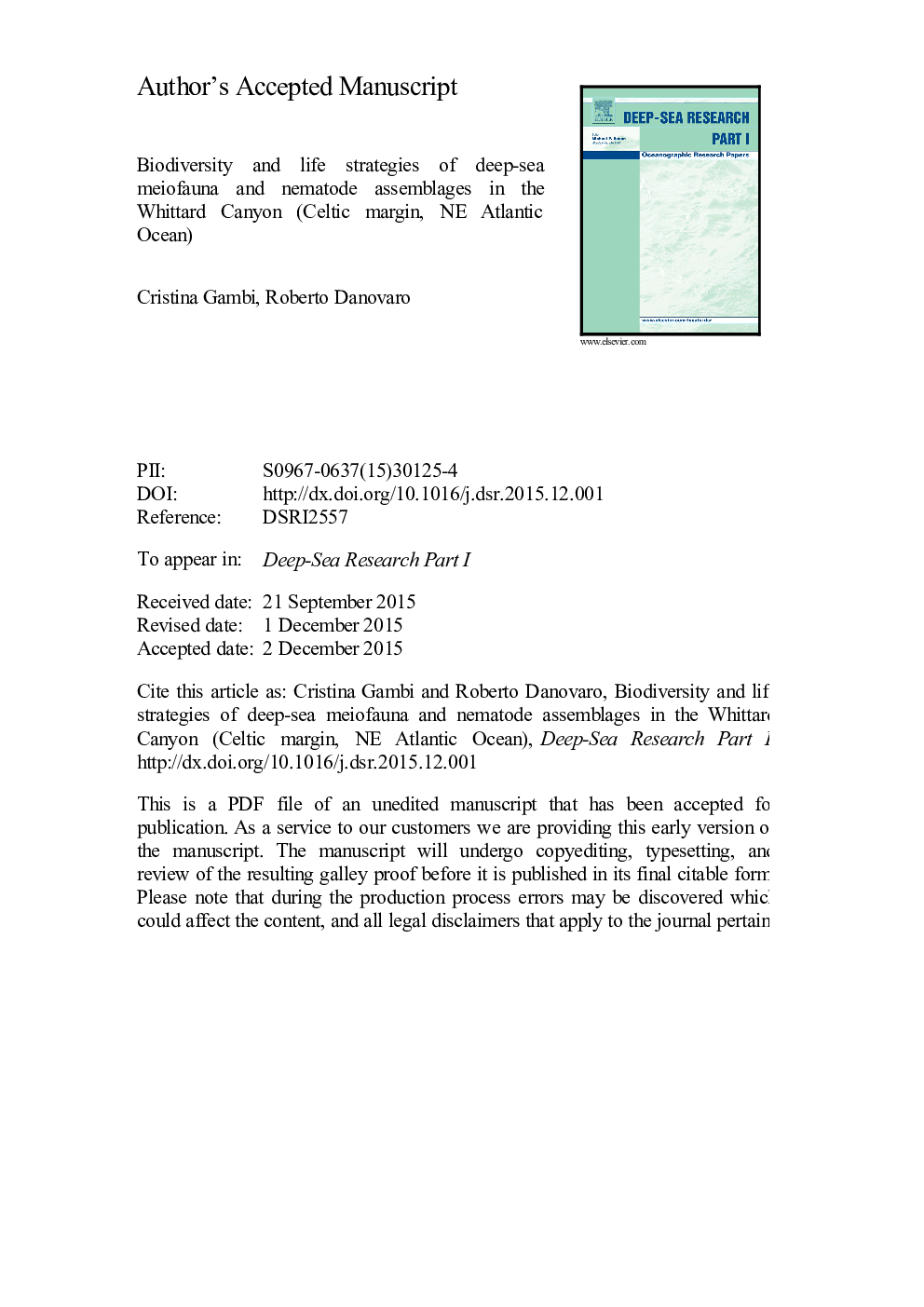| کد مقاله | کد نشریه | سال انتشار | مقاله انگلیسی | نسخه تمام متن |
|---|---|---|---|---|
| 6383436 | 1626322 | 2016 | 37 صفحه PDF | دانلود رایگان |
عنوان انگلیسی مقاله ISI
Biodiversity and life strategies of deep-sea meiofauna and nematode assemblages in the Whittard Canyon (Celtic margin, NE Atlantic Ocean)
دانلود مقاله + سفارش ترجمه
دانلود مقاله ISI انگلیسی
رایگان برای ایرانیان
موضوعات مرتبط
مهندسی و علوم پایه
علوم زمین و سیارات
زمین شناسی
پیش نمایش صفحه اول مقاله

چکیده انگلیسی
An extensive sampling strategy has been carried out along bathymetric transects in two branches (Eastern middle and Western) of the Whittard Canyon and in two adjacent open slopes to investigate meiofaunal assemblages (including nematode diversity and their life strategy) in the Celtic margin, Northern Gulf of Biscay. Our results show the presence of differences in terms of meiofaunal abundance and biomass among habitats even when located at the same depth. Meiofaunal abundance and biomass in the upper and middle (1000-2000Â m) part of the branches of the Whittard Canyon are typically higher than those reported in adjacent open slopes while, in deeper sediments (ca. 3000Â m), an opposite pattern is detected. The availability of food sources (both in term of quantity and quality) plays a key role in explaining such differences. Diversity expressed either as the richness of meiofaunal taxa and of nematode species is typically higher in slopes than in the branches of the Whittard Canyon. Turnover diversity is high (40-100% for meiofaunal rare taxa and 61-78% for nematode species, respectively) either among habitats and depths. Although a general dominance of deposit feeders, predators are more abundant in slopes (9-12% of total nematode abundance) than in both branches of the Whittard Canyon (4-7%). The higher fraction of predators of the nematode assemblages inhabiting the slopes determined higher values of the maturity index (i.e., more persisters, c-p=4/5). We hypothesize that the life strategies of nematode assemblages are influenced by gravity flows, sediment instability and the 2-3 times higher availability of phytopigments, which characterize the upper part of the Whittard Canyon, favoring opportunist/colonizer species. Our findings indicate that different deep-sea habitats are associated to different life strategies, thus contributing to increase the functional diversity of deep-sea ecosystems.
ناشر
Database: Elsevier - ScienceDirect (ساینس دایرکت)
Journal: Deep Sea Research Part I: Oceanographic Research Papers - Volume 108, February 2016, Pages 13-22
Journal: Deep Sea Research Part I: Oceanographic Research Papers - Volume 108, February 2016, Pages 13-22
نویسندگان
Cristina Gambi, Roberto Danovaro,